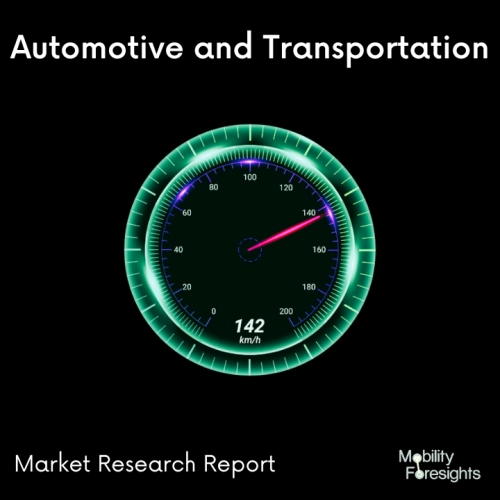
- Get in Touch with Us

Last Updated: Apr 25, 2025 | Study Period: 2024-2030
Ready-mixed concrete is delivered to a construction site by a concrete truck, also known as an agitator truck, cement truck, or transit mixer. The mixing drum and mechanics are supplied by a specialized company, while the trucks are constructed on typical truck chassis.
Cement trucks and concrete trucks are sometimes confused. Concrete, not cement, is found inside the rotating cylindrical "barrel" that you see attached to trucks. These concrete trucks are frequently seen on construction sites with workers so that the concrete may be laid to build a parking garage or a highway.
A concrete mixer, often known as a cement mixer informally, is a tool used to uniformly mix cement with water and aggregates like sand or gravel to create concrete.
In a standard concrete mixer, the ingredients are mixed in a rotating drum. A truck weighing empty weights 27,000 pounds. 4,000 pounds are added for every additional cubic yard of concrete. Usually, there are around 20 feet between the front and back axles.

Global electric heavy-duty concrete mixer truck market accounted for $XX Billion in 2023 and is anticipated to reach $XX Billion by 2030, registering a CAGR of XX% from 2024 to 2030.
The first fully electric, heavy-duty concrete mixer vehicle with zero exhaust emissions was provided by Volvo Trucks to CEMEX. A agreement between Volvo and CEMEX on global collaboration in electromobility solutions to achieve lower carbon emissions and more productivity includes the battery electric truck as the most recent development.
The Volvo FMX electric heavy-duty truck, which was shown yesterday at a ceremony in Berlin, Germany, can work continuously for an entire day on a single top-up charge during the regular break. Starting this month, it will be in use in a ready-mix concrete facility in Spandau, Berlin.
It is difficult to electrify concrete transportation because of the enormous loads and ongoing mixing requirements. Volvo Trucks and CEMEX are cooperating to develop and expand the technology required to make emissions-free transport become a reality in the demanding construction industry as fully electric heavy-duty transport gradually increases.
| Sl no | Topic |
| 1 | Market Segmentation |
| 2 | Scope of the report |
| 3 | Abbreviations |
| 4 | Research Methodology |
| 5 | Executive Summary |
| 6 | Introduction |
| 7 | Insights from Industry stakeholders |
| 8 | Cost breakdown of Product by sub-components and average profit margin |
| 9 | Disruptive innovation in the Industry |
| 10 | Technology trends in the Industry |
| 11 | Consumer trends in the industry |
| 12 | Recent Production Milestones |
| 13 | Component Manufacturing in US, EU and China |
| 14 | COVID-19 impact on overall market |
| 15 | COVID-19 impact on Production of components |
| 16 | COVID-19 impact on Point of sale |
| 17 | Market Segmentation, Dynamics and Forecast by Geography, 2024-2030 |
| 18 | Market Segmentation, Dynamics and Forecast by Product Type, 2024-2030 |
| 19 | Market Segmentation, Dynamics and Forecast by Application, 2024-2030 |
| 20 | Market Segmentation, Dynamics and Forecast by End use, 2024-2030 |
| 21 | Product installation rate by OEM, 2023 |
| 22 | Incline/Decline in Average B-2-B selling price in past 5 years |
| 23 | Competition from substitute products |
| 24 | Gross margin and average profitability of suppliers |
| 25 | New product development in past 12 months |
| 26 | M&A in past 12 months |
| 27 | Growth strategy of leading players |
| 28 | Market share of vendors, 2023 |
| 29 | Company Profiles |
| 30 | Unmet needs and opportunity for new suppliers |
| 31 | Conclusion |
| 32 | Appendix |